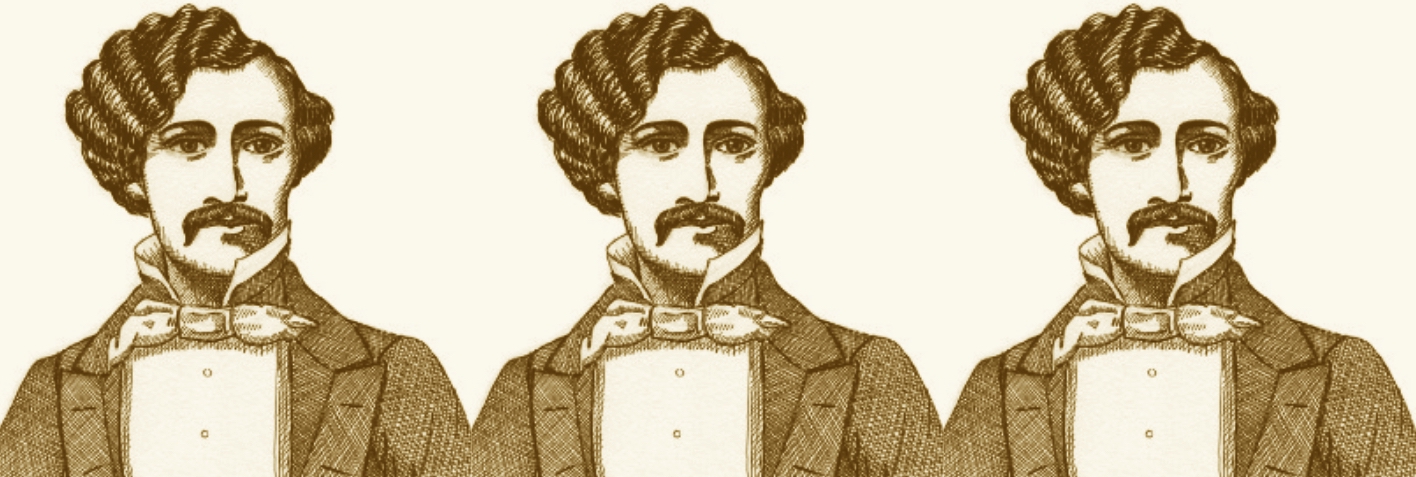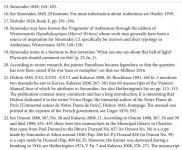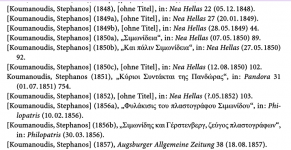CARM
https://forums.carm.org/threads/cod...ment-in-berlin-1856.13481/page-6#post-1117592
He was engaged in serious criminal activity, from 1847, again utilizing the name of Benedict to justify himself. From the outset, the Greek government missed a golden opportunity to convict him. The below taken From
ΚΟΝΔΥΛΟΦΟΡΟΣ, Ετήσια έκδοση Νεότερης Ελληνικής Φιλολογίας, ΤΟΜΟΣ 14/2015
KONDYLOFOROS, Annual publication of Modern Greek Literature, VOLUME 14/2015
_________________________
It was towards the end of
1847, perhaps in 1848, that Simonides tried to sell to the Greek government manuscripts with texts of the classics (Homer, Hesiod, Menander, Polybio , Arrian, Anaximander, etc.) - the same ones that he later promoted to the Greek government. - but also unknown works, such as the anecdotal " History of Lasgiki", where it is proven that "the Greeks and not the Egyptians were the finders of the letters as well as the hieroglyphic signs ". For the acquisition of these rare manuscripts, he distributed different versions: to A.R. Ragavi recounted that from his uncle's monastery he retrieved "a huge box, sealed with a hundred seals and containing the Dragon, [...] a collection of curious manuscripts", he told others that he found the manuscripts "in basements under a holy bank or in the Mount or in Symi" or in "terms of a [...] kenoma subgeion". The bishop again writes that in the hands of his uncle,
Benedictus, a golden imperial insignia had been found, which described the location of a crypt, where during the years of the Crusades the monks had kept valuable manuscripts and sacred vessels to save them from the plunder of the Latins; that, by copying them, he was introduced to the ancient writing; and that after the death of his uncle, he
carried them in a sailing ship to Symi. ]"This blessed man", commented Ragavis, "destitute and unattainable at the same time finds the entire library of priceless manuscripts, the entire California of the purity of the ancient philosophy of gold !"
These 150 manuscripts, Simonides declared that he was willing to give them to the public, with compensation, of course, otherwise he threatened to sell them to British tourists. His request was strongly supported by the newspapers of Napaia Aeon and Elpis (but also Amalthia of Smyrna), where regularly published news about the impressive content of the manuscripts: there great inventions, such as photocopying, silicon cotton, steam navigation, printing, papermaking, cannons" etc. works of Greeks were revealed, "and in fact many centuries ago, when Europe was plunged into deep darkness". If all this is true, the
pseudonym Koumanoudis wrote in the ep. New Greece, of course they glorify the Greek intelligence and "glories will be added to the [...] noble Greek nation", but if they are "creatures of an agyrtic disposition", then they "turn a blind eye to the Greek character " , and the insolent counterfeiter must be punished under the law "against plagiarists."
The Simonides soon developed into a burning national issue, obliging the
Ministry of Ecclesiastical and Public Education to convene in December 1848, as Koumanoudis persistently requested, a committee "of male experts [...] to examine for themselves the about the manuscripts" and to decide on the value of these apples. It seems that at least two committees of university professors and distinguished scholars were set up, but they did not reach a unanimous conclusion. The newspapers supporting Simonides pointed out that the eloquent men of the nation were not "competent for everything", since philologists are not necessarily "palaeographers " nor familiar with ancient manuscripts. The Ministry should turn to the Archaeological Society, which, in consultation with Andreas Moustoxidis and "with the archaeologists and paleographers in Europe and indeed in Germany", could issue a "correct opinion". On the other hand, he had to grant Simonides a "monthly subscription" and convince him to hand over the manuscripts "in safe deposit", so that a "precious treasure" would not be lost for the country.
]The best thing would of course be, "because the issue of manuscripts has become an Eastern issue in Greece", to establish "for the honor of the nation and us" a Manuscript Society, which will take care of the publication of the unpublished manuscripts, with the assistance of "of rich expatriates and allogeneic Philhellenes", and for the timely deposit of the manuscripts in the National Library.
Journalists against academics, "sophomonopolists" against "manuscript makers", pro-Russians against pro-British, manuscripts that become "Apostles politicians of the Bear against the Meridian", new Manusia: the national philology is the weight of politics. As the opinions of the sages were never made public by the government, Simonides protested about an attempt "mostly to steal the manuscripts here", while Ikesios Latris copied from the precious manuscripts and published excerpts of them in the press. However,
the estimates of at least one committee member, S.A. Koumanoudis, are recorded in his extensive report to Minister D. Kallifronas, which was submitted on January 2, 1849 and is preserved in his archive. His final conclusion was "that I saw no anecdote, nothing worth talking about in these manuscripts and that as unpredictable and angry as I came to their examination with hopes of results, I left the project as angry, seeing that the expectations of its zealots were truly in vain of our ancient glory".
In the manuscripts of Hesiod, Homer, Anacreon and Pythagoras, which the thirty-year-old and uneducated Koumanoudis had studied "carefully" in three sessions to conclude that, according to the rules of "palaeography and critical science in general" , are "new and fake ", briefly identified the following obvious problems:
As for the writing, Hesiod's text is written in a strophe, something unjustified for a manuscript of the 3rd century . BC, with mixed characters from different eras, some completely unrelated to the ancient literature, and with strange musical points interspersed by couplets. Corresponding anachronisms and incorrect writings (e.g. a combination of kionidon and boustrophidon), sometimes inspired by forged inscriptions (e.g. in the ed. of Roosini and Petritsopoulos, which were corrected by Boobis, Dogrie ilioiriogy™), he located in one and unique sheet with Homeric text presented by Simonides. In the manuscripts of Anacreon and Pythagoras he pointed out paradoxical soliloquies .............. In short, Koumanoudis detected in Simonides' merchandise all the monsters that Ragavis and his late English, German and Italian accusers would later describe: anachronisms and soliloquys, spurious but non-existent graphic signs, copies of stereotypes from doses, invented names and impressive titles, questionable material.
The judge's undisguised verdict, based on philological precision and a solid knowledge of publishing, was that all four manuscripts "are betrayed as having been produced with the peculiar character of the letters of the variety for the sake of it, but under one and the same hand". " Finally I've defeated this human," he wrote triumphantly in his personal diary.
Koumanoudis may have taken the lead in exposing a philological blunder, but the war was not yet won. Simonides sued him for slander, and the case was heard in the Criminal Court of Athens in July 1850. From the side of the state, this time too "nothing further happened". Why, despite Stefanos Koumanoudis' opinion-catalyst and his
numerous articles in New Greece and Pandora "in order to shape public opinion against fake manuscripts", despite his exhortations to the government "to interrogate this forger and to refer him to trial so that he may be punished according to the laws and thus satisfy the insulted honor of the nation", the ministry, indifferent "about the morality of the place", left the whole case pending, but at least it did not buy any from the Simonides manuscripts.
[Simonides] then discontinued the "ancient manuscripts" business and tried another innovative scheme,
the publication of anecdotal works purporting to contain his unclaimed manuscripts. He began with Symaida, a work by Meletios of Chios (1236), hieromonk of Mount Athos, dedicating the poem to the patriarch of philology, Andreas Moustoxidis............
____________
In the early 1950s (1951, 52), Simonides was again ridiculed and exposed by A. R. Ragavis's lengthy criticism of him in Pandora. He was also critcized by others. After so much exposure of his attempts to make mony from his forgeries, he left Athens for good, bound for Constantinople.

 lithub.com
lithub.com



